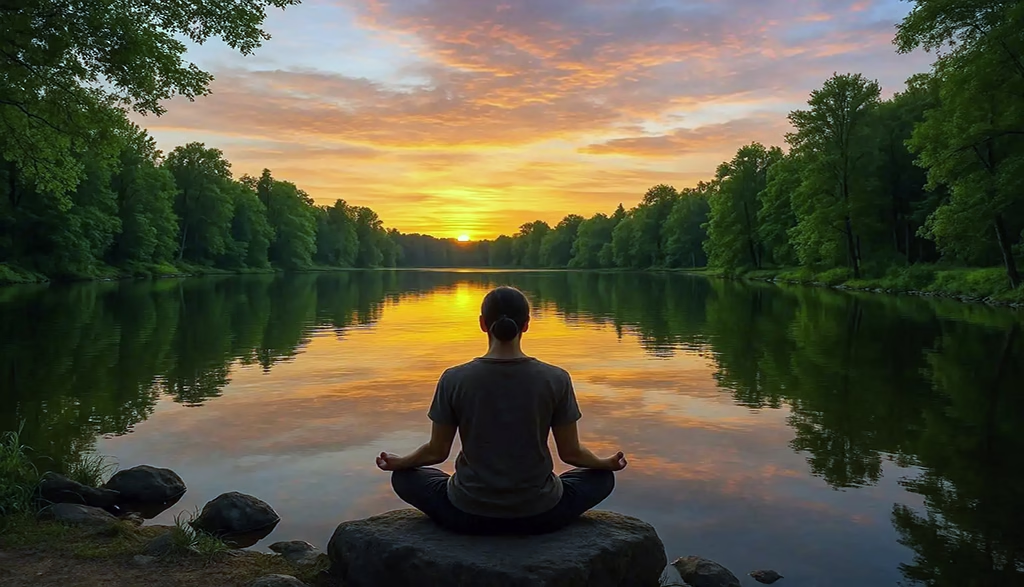Reading Time: 3 minutes
Content
The Art of Living
We live in a world shaped by constant acceleration and an overwhelming flood of stimuli. In response, embracing the art of slow living becomes not only a conscious choice but also a necessary act of self-preservation. It allows us to reclaim holistic well-being, deepen our authentic connection with ourselves and our surroundings, and ultimately improve our quality of life through intentional and unhurried practices.
What Does It Mean to Live Slowly?
Slow living is a mindful approach that invites us to decelerate the frantic pace of modern life. Importantly, it’s not about doing less—it’s about doing things with purpose. By dedicating quality to the present moment and prioritizing what truly matters over sheer quantity, we cultivate a richer experience of life. Moreover, this lifestyle can be practiced in both urban and rural settings, integrating pauses and rituals that help us reconnect with our essence and the world around us. In essence, it is a way of mastering the art of living deliberately.
The Impact of a Fast-Paced Life
Stress has been labeled by the World Health Organization (WHO) as “the epidemic of the 21st century.” In fact, recent data reveals that nine out of ten people have experienced stress in the past year, and 40% suffer from it continuously—primarily due to the hectic rhythm we maintain. Fortunately, practices like meditation have been scientifically proven to promote relaxation and strengthen inner resilience. Additionally, they nurture positive emotions such as compassion, love, patience, generosity, and forgiveness. Through meditation, we can truly embrace the art of living with balance and peace.
The Science of Living
Benefits of Living Slowly
Living slowly offers a wide range of benefits. For instance:
- It reduces stress and anxiety.
- It improves sleep quality.
- It enhances mental clarity and creativity.
- It deepens emotional connection with others.
- It supports nervous system balance and overall physical and mental well-being.
Furthermore, this lifestyle encourages us to listen to our emotions and make more conscious decisions that align with our personal values, mastering the art of intentional living.
Short Stories That Inspire
To illustrate, here are a few everyday rituals that embody the spirit of slow living:
- Ana spends fifteen minutes each morning enjoying breakfast without rushing, without checking her phone, and without planning the day ahead. This small ritual allows her to start calmly, savoring her coffee and anchoring herself in the present, truly embracing the art of living in each moment.
- Carlos chose to turn off mobile notifications during dinner. As a result, he rediscovered the joy of deep conversations with his family and the delight of listening to music together—free from digital interruptions.
- Sara rented a bicycle to commute to work. Instead of stressing in traffic, she now uses that time to breathe fresh air, observe the city’s rhythm, and arrive at the office more relaxed.
- José dedicates ten minutes each afternoon to contemplate his favorite plant in the living room. These moments of pause help him disconnect, quiet his mind, and return to his tasks with renewed energy.
- Isabel and her friends agreed to take monthly walks through the park with no fixed destination. These gatherings have gifted them authentic connection and taught them to enjoy the journey more than the destination.
Cultural Context and Final Reflection
Even though the world moves quickly, each person has the power to choose their own rhythm and cultivate moments of presence and pause. Living slowly does not mean giving up on goals or activities—it means pursuing them with awareness, quality, and fullness. In a world that rarely stops, learning the art of slow living becomes an act of rebellion and self-care. It reconnects us with what truly matters: the present, our relationships, and the life we choose to lead. Truly, it’s the essence of mastering The Art of Living.
So why not begin today? After all, small pauses can profoundly transform our experience of life.
Other interesting articles
Working Without Stress: A Creative Approach – The Natural Memo Times




